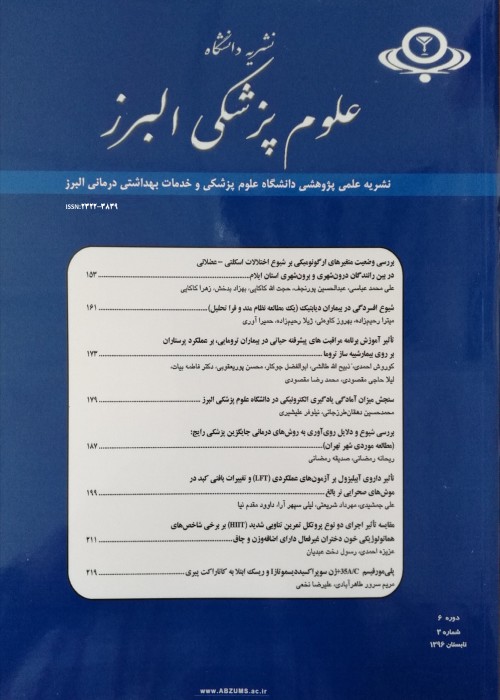Evaluation of the Effectiveness of Dental Curing Light in Dental Offices Located in Karaj in 2016
Author(s):
Article Type:
Research/Original Article (دارای رتبه معتبر)
Abstract:
Objective
Light-cured composites and restorative materials are widely used in dentistry. The success of restoration largely depends on the effectiveness of the curing light, including the duration of irradiation and wavelength. This study was conducted to evaluate the effectiveness of curing light devices routinely used in dental offices of Karaj in 2016.
Methods
In this descriptive-analytical study, 120 QTH and LED curing light devices used in Karaj dental offices were randomly evaluated. A standard questionnaire was used to collect the variables of the device type, age, and brand, number of repairs, reasons for repair, time of last repair, number of bulb replacements, time of last bulb replacement, device being fitted with a measure severity, duration of irradiation for each composite layer, frequency of using the equipment in a day, sterilization method, light intensity, and number of office days in a week. Data were analyzed with SPSS using Spearman correlation coefficient, independent t test, and chi-square at a level of 0.05%.
Results
The results showed that the light intensity of all devices was above 200 mw/cm2. The light intensity of 11.1% of QTH devices was unfavorable while the light intensity of all LED devices was favorable. The results showed a significant correlation between brand and light intensity, between the number of bulb replacement and device type, between the number of bulb replacements and light intensity, between the number of bulb replacements and clinical age of the device, and between the number of repairs and the device type (P≤0.05). There was no significant relationship between the device type and repair reason. The results also showed an indirect relationship between the clinical age of the device and light intensity. A significant difference was found in light intensity between QTH and LED devices.
Conclusion
The light intensity of 11.1% of QTH devices was unfavorable, and the main reason for repair was tip breakage. Light intensity decreased with an increase in the clinical age of the device; therefore, regular quality control and timely bulb replacement are of great importance.Keywords:
Language:
Persian
Published:
Alborz University Medical Journal, Volume:8 Issue: 1, 2019
Pages:
54 to 60
magiran.com/p1946065
دانلود و مطالعه متن این مقاله با یکی از روشهای زیر امکان پذیر است:
اشتراک شخصی
با عضویت و پرداخت آنلاین حق اشتراک یکساله به مبلغ 1,390,000ريال میتوانید 70 عنوان مطلب دانلود کنید!
اشتراک سازمانی
به کتابخانه دانشگاه یا محل کار خود پیشنهاد کنید تا اشتراک سازمانی این پایگاه را برای دسترسی نامحدود همه کاربران به متن مطالب تهیه نمایند!
توجه!
- حق عضویت دریافتی صرف حمایت از نشریات عضو و نگهداری، تکمیل و توسعه مگیران میشود.
- پرداخت حق اشتراک و دانلود مقالات اجازه بازنشر آن در سایر رسانههای چاپی و دیجیتال را به کاربر نمیدهد.
In order to view content subscription is required
Personal subscription
Subscribe magiran.com for 70 € euros via PayPal and download 70 articles during a year.
Organization subscription
Please contact us to subscribe your university or library for unlimited access!


